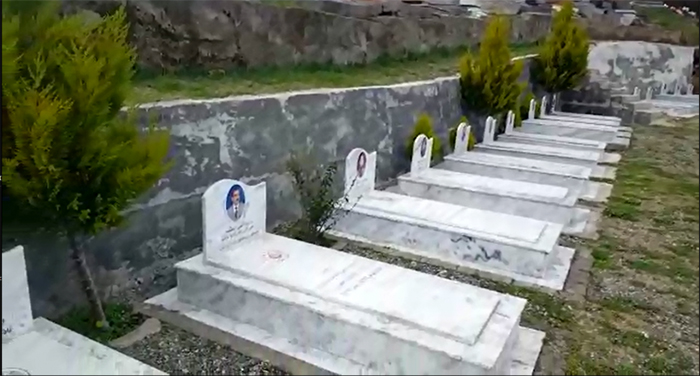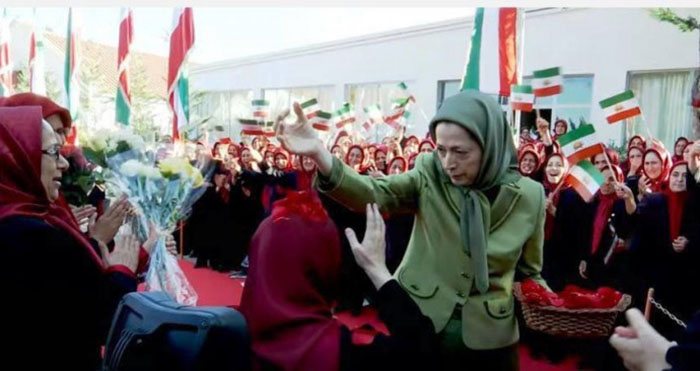News of the deaths of at least two MEK members from COVID-19 last week was troubling. In April, Albania was warned that the MEK’s refusal to allow public health officials to access the closed camp in Manez could put the lives of the residents and local citizens at risk. Families of MEK members have petitioned Edi Rama and his government to take steps to prevent a tragedy. Unfortunately, the state of Albania appears to be in thrall to the Rajavi cult and has failed to challenge, change or contain it. Health officials are still denied access to the MEK’s closed camp, which has no registered doctors among its residents, and deaths there are not subject to a Coroner’s report. It is hard to imagine worse conditions in the fight against the coronavirus pandemic.
Instead of putting the lives of her followers at the forefront of her concerns, MEK leader Maryam Rajavi gleefully claimed these newly dead as “martyrs” and heaped praise on them simply for dying. Two things are significant in this callous declaration. First, the cause of death was missing, unlike all previously announced deaths for which some explanation – true or not – has been forthcoming. Such an omission will be interpreted as an admission; these individuals really did die from COVID-19.
Second, Rajavi has found a new way to exploit the concept of ‘martyrdom’ which her husband so skilfully manipulated for years. Not only did MEK websites proclaimed the dead as martyrs, but now Rajavi heaped praise on them for dying without abandoning “the struggle”. In doing so, Rajavi has redefined what martyrdom means for the members. To achieve martyrdom now, all one has to do is to die while obedient to Rajavi.
In 1965, the MEK founders adopted the Shia culture of venerating martyrdom along with lessons learned from Marxist revolutionary struggles. The MEK celebrated its first suicide bombing on 9/11: a young MEK activist stepped forward to clasp Ayatollah Sayyid Asad Allah Madani after the Friday Prayer on September 11, 1981, exploding a bomb that killed them both. Revolutionary struggle before and after the 1979 Revolution produced its share of martyrs; mostly helped by the zealous purges of opposition to Ayatollah Khomeini’s newly formed Islamic Republic.
When Massoud Rajavi seized leadership of the MEK, the organization’s fate was sealed. The self-appointed guru instigated a programme of coercive mind control (aka brainwashing) which resulted in a membership fearfully and mindlessly obedient to his whims and demands. In re-purposing the MEK from revolutionary group to personality cult used to pursue a terrorism campaign against Iran, Rajavi very quickly realised that martyrdom was a commodity which he could bank like gold or dollars. It became known in the MEK as a blood bank – the more blood the better. For Rajavi, the ‘book of martyrs’ acted like the share prospectus of a big company, advertising its success.
And so it continued, through the disastrous Eternal Light operation of 1988 (which Rajavi exploited by attacking his followers for not believing in him enough), the deployment of suicide squads into Iran in the next decade, to putting in harm’s way various clusters of members – such as the battles over Camp Ashraf. Over the past four decades, Rajavi has accrued a rich harvest of martyrs through suicide bombings, self-immolations and swallowing cyanide capsules in the name of “the struggle” against the “mullah’s regime”. As the deaths from these tactics added to Rajavi’s blood bank, the blood bank itself garnered him political capital from other bloodthirsty warmongers. John McCain, Rudi Giuliani, John Bolton all showed willing to risk their reputations to make lucrative speeches praising and advocating the MEK based on this blood bank; ‘the MEK will get results’ they claim.
But since the MEK were deported to Albania, Maryam Rajavi has been deprived of opportunities for creating martyrs. Her claims that agents of the Iranian regime want to come to the MEK camp to kill the members have no basis in fact and are only used to frighten the members into continued submission. Instead, she has had to rely on the baseline of attrition through death which has underpinned the MEK’s membership numbers for at least two decades: that is, deaths by natural causes – old age and sickness – deaths by suicide and deaths by murder – often disguised as suicides. Whatever the causes of these deaths, their numbers are highly disproportionate in comparison with a cohort of the same demographic of population living in normal society. In other words, deaths in the MEK are not natural nor inevitable; only desirable. They add to the blood bank of martyrs.

These deaths, however, are not only mundane – elderly and sick people dying in bed – they are not enough. Previously, Massoud Rajavi commanded the 3800 members that in May 2003, coalition officers consolidated in Camp Ashraf, Iraq. According to a 2017 UNHCR report, a total of 2,901 individuals were relocated to Albania in the course of 2016. The Albanian police reported at the end of 2016 that “There are about 2745 MEK members in our country: 11 members have died; 80 have left our country with regular papers; 65 were illegally removed; Mojahedin who continue to be full members of MEK and follow their rules for living as members are 2621; Mojahedin dissociated from MEK are 124 people”.
We see from this that one of the biggest problems for Rajavi is not the untimely and disproportionate number of deaths among her followers, but the even greater attrition through desertion. Since arriving in Albania, the members have become disillusioned. In spite of relentless brainwashing, coercion and harsh punishments for disobedience, many members took advantage of their new location to escape the group. Currently, just over 2,000 remain. To prevent more people leaving, Rajavi created a closed, isolated camp to incarcerate the enslaved members, where cynically they are worked to death for “the cause”. Time has exhausted the once vigorous fighters who pledged to fight to overthrow the Iranian regime. The members are now old and sick and in danger of giving up. According to Rajavi, their only task now is to die in her service and be banked as martyrs. The definition of MEK martyrdom has been truly hollowed out


